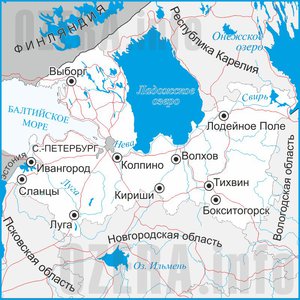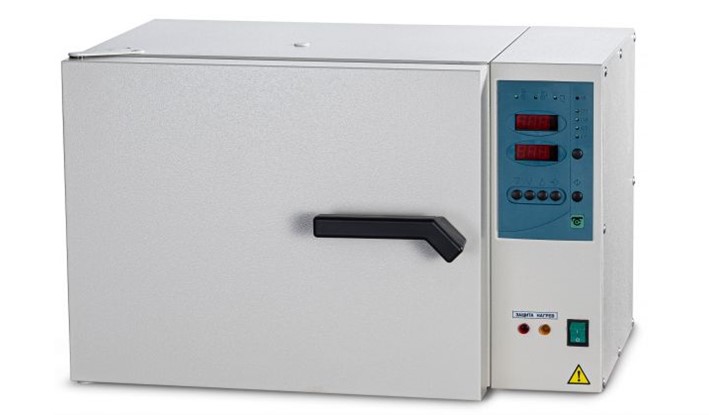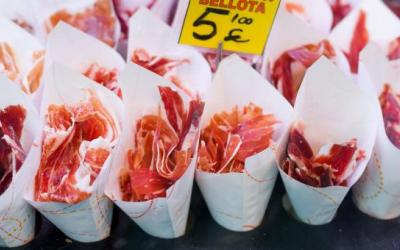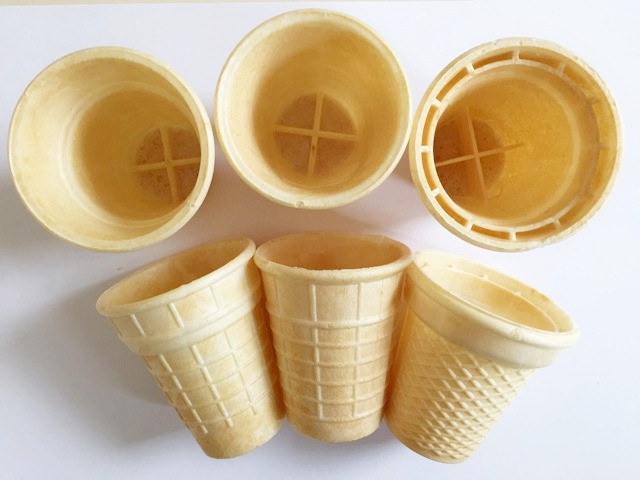Upward movement
Our agrarians, photos of the best of which did not leave the pages of newspapers and TV screens in autumn, are real heroes! But would they have been able to achieve such results if scientists had not provided them with seeds of domestic selection? Of course not. The fact that in 2022 we received 1 ton for each Belarusian is a joint victory for the country's scientists and farmers!
We save currency - half a billion rubles annuallyOn the eve of the Day of Belarusian Science, 7 Days journalists visited the SPC of the National Academy of Sciences of Belarus for agriculture, where they learned that 80% of the country's arable land, which is 2 million hectares, is sown with varieties of cereals and legumes of domestic selection, the authors of which are scientists from this division of the National Academy of Sciences Belarus. If it weren't for this, we would buy seeds for foreign currency, which would cost about 500 million rubles annually.
- Almost no other country in the world has such a high level of use of domestic seeds, - says DOCTOR of Sciences Academician of the National Academy of Sciences of Belarus Fyodor Privalov, General DIRECTOR of the SPC of the National Academy of Sciences of Belarus for agriculture. - The creation of seeds adapted to the local climatic and soil conditions of the regions is the work of the mind and hands of our scientists and specialists. They not only develop, but also annually collect elite seeds and their hybrids - up to 500 tons each laboratory, department. When I came to the SPC for agriculture, 40 tons of seeds were grown here per season, today - 3 thousand tons!Not only the breeding of new varieties, but also elite seed production has become one of the most important activities of the team of this leading agrarian scientific and practical institution.
Spring for MordoviaWe met with Fyodor Privalov after a teleconference with representatives of the Ministry of Agriculture of Mordovia. What did they talk about with the Russians?
- Agrarians of Mordovia are asked to give a number of varieties of spring cereals and legumes for testing. They ask to send it before spring - the sowing season is coming soon. If our winter crops are not suitable for Mordovia, where frosts are below 40 degrees in winter, then spring crops - triticale, barley, oats, rapeseed, Belarusian legumes - just give them!
In the last year, the interest of neighbors in the work of the breeders of the center and in the varieties of grain and other types of agricultural crops bred by them has increased many times over.
"Two Belaruss" in RUSSIAThe seeds created in the laboratories and departments of the center are trusted. In the summer of 2022 alone, about 2,000 Russian scientists and specialists came to us for the Field Day practical seminars. And one day - 20 delegations from 20 Russian regions at once! In total, delegations from 37 regions of the Russian Federation visited us in the summer - from the Leningrad Region to Sakhalin.
In the neighboring country, 3 million hectares are sown with grain and leguminous seeds of Belarusian selection, and another 2 million hectares are sown with rapeseed. Considering that in our country there are only about 2.4 million hectares of all land, in Russia we "cover" with our seeds the territory of two Belarus!
What caused the increased interest of the agrarians of the Union State in our achievements in the field of agricultural science and seed production?
- Previously, trucks with food, which neighbors bought abroad, went to Russia through Belarus one after another. A little over 10 years ago, the Russians realized that it was time to develop their agricultural production. Today they fully provide themselves with poultry and pig products. Raised in the production of MILK, beef. And although the needs for the last two positions are not closed, progress is evident! - says the interlocutor.
The growth of animal husbandry requires an increase in the forage base. Given that the neighbors are buying about 3 million tons of seeds, and agricultural science has been practically destroyed during the years of the country's independence, the Russians turned to the Belarusians.
- So we help our neighbors with the seeds of our selection, - says Fedor Ivanovich, specifying that Russian scientists will continue to build up their own potential for a long time to come. After all, it takes 12 years to breed one variety alone, and three more years to test.
Bite your elbows, West!Discussing how important it is for every country to have a stable economy, Fyodor Privalov recalled how in Belarus they once wanted to distribute land - each a hectare:
- It turns out that Western experts dreamed that we would not have our own agriculture and that we would be completely dependent on their producers! - the academician says and has no doubts that the system of the world economy continues to work in the same mode. That is, they are still interested in "suffocating" us, arguing something like this: "If my neighbor works well, I will have neither development nor a sales market" ... But we did not sell our factories and did not ruin, like the Baltic countries, rural economy.
Genetics, biotechnology and breedingWorking closely with the Russian regions, Belarusian breeders do not lose sight of the concern for increasing the productivity of domestic fields. Improving genetic and biotechnological methods and breeding material, the scientists of the Research and Production Center for Agriculture created a system for breeding high-yielding varieties of cereals, legumes, oilseeds, fodder and industrial crops adapted to our soil and environmental conditions, taking into account the direction of their economic use.
The SPC for agriculture is engaged in breeding and elite seed production of 38 types of agricultural plants. The number of registered varieties at the beginning of 2023 reached almost 500 varieties (more precisely, 494).
In total, in 2022, about 200 varieties of agricultural plants bred by RUE "Scientific and Practical Center of the National Academy of Sciences of Belarus for Agriculture" were cultivated in the fields of our country, which occupied more than 80% of the sown area. And for winter rye, oats, fodder barley, buckwheat, spring wheat and lupine, domestic varieties - more than 90%.
Eroma Urban- All of them have a high level of productivity and successfully compete with the best achievements of foreign selection, - said Eroma Urban - Doctor of Agricultural Sciences, Corresponding Member of the National Academy of Sciences of Belarus, Deputy General Director for Research. By the way, Eroma Petrovich, being engaged in administrative work, continues his active scientific activity. He is one of the authors of new varieties of winter rye. About 40 varieties have been created with his participation!
Recently, the State Register of Varieties of Belarus of the Scientific and Production Center for Agriculture has been replenished with more than 30 new varieties.
- If a new variety does not give an increase in productivity in the country by 10-15% and at least 75% in the tested plots, it is not included in the register, - said Eroma Urban. - As a result, varieties of NPTs give more than 100 c/ha for cereals, up to 60 c/ha for legumes, and 60-65 c/ha for rapeseed. Every year we raise the bar in terms of the yield of varieties.
Shipyany-ASK will confirmEvery year Belarus exports food worth billions of dollars. In 2022 alone, food sales abroad amounted to more than $8 billion.
- In order to ensure their own food security, and to sell part of what is produced, and at a favorable price, to other countries, a reliable fodder base of grains, legumes and other high-energy crops rich in protein and microelements is required. And such a base in Belarus was created, among other things, thanks to fodder varieties specially bred at the Research and Production Center for Agriculture! - says Fedor Privalov.
That is, if there were no selection and domestic seed production, Belarus would not have reached such a level of food security and exports that our country provides today!
Talking about the achievements, Doctor of Science Fyodor Privalov complains that domestic legumes, in particular lupine, in one ton of which contain more nutrients and protein than 4 tons of barley, have not yet taken their proper place on the feed table of the Belarusian livestock! And the reason for this fact is as follows: the technologies of domestic CCPs, which purchased grain processing machines in the 80s, are not suitable for grinding lupine. This means that our bakeries, "sharpened" for the production of animal feed, must undergo additional modernization.
Yes, it costs money. On the other hand, the country will not spend money on the purchase of soybean meal, spending $350 million annually, - specifies the general director of the Scientific and Production Center for Agriculture.
By the way, the employees of RUE "Shipyany-ASK" - a subsidiary, were convinced that lupine is an extremely important crop for animal nutrition. Growing not only traditional crops, but also lupins, rapeseed, soybeans and sunflowers, they annually create a one and a half year supply of feed and sell part of what they have grown to a neighboring poultry farm. Observing the requirements of agricultural technologies, in Shipyany-SK they also get a good harvest of buckwheat - 30 centners / ha, rapeseed - 30-40 centners / ha, etc.
FLOUR, pasta, cerealsHighly productive varieties of all types of grain for food purposes are created in the center for agriculture, in its laboratories, departments and other subdivisions. In particular, wheat for the baking, pasta, confectionery industry and almost all cereal crops. But there was a time after the collapse of the Soviet Union, when the young sovereign Belarus had to take a loan from the Czech Republic in order to buy food wheat...
Today, we have domestic wheat, which has excellent baking qualities, and also pasta varieties and fodder wheat, which is used to feed livestock.
- Also, the country provides itself with buckwheat, barley, millet, semolina. We do not produce only rice, notes Fedor Privalov. - In addition, thanks to new varieties of brewing barley, our brewing industry is one of the leading places in Europe. The fact that our brewers in this region are among the most successful is also the merit of the breeders of the NPC for agriculture.
We made it!The scientists of the center work in close cooperation with other scientific and scientific-practical institutions, including the Institute of Soil Science and Agrochemistry, the Institute of Plant Protection, the Institute of Land Reclamation, the Institute of Flax, the Experimental Scientific Station for SUGAR Beet, the Polesye Institute of Plant Growing, zonal and regional institutes of plant growing. experimental stations of the National Academy of Sciences of Belarus.
- Without selection and domestic seed production, Belarus would not have such a stable agricultural economy, - says Fedor Privalov, recalling the achievements of fellow scientists who were able to establish fundamentally new directions in the country's crop production. In particular, the Polesye Institute has developed a number of early, middle and late varieties of corn.
In addition, 430,000 hectares of rapeseed are sown annually in Belarus, 70% of which are Belarusian varieties bred by scientists from the SPC of the National Academy of Sciences of Belarus for agriculture. But the skeptics, it was the case, said: "Belarusians will not succeed!" But our scientists and farmers succeeded! A significant contribution to the achievements of the SPC of the National Academy of Sciences of Belarus on agriculture in the field of agriculture, breeding and seed production was made by such scientists as I.S. Lupinovich, P.P. Rogova, A.I. Lappo, V.I. Shempel, Ya.N. Afanasiev, E.A. Alekseev, O.K. Kedrov-Zikhman, P.E. Prokopov, M.G. Chizhevsky, A.L. Semenov, Hero of Socialist Labor N.D. Mukhin, I.G. Strelkov, A.I. Kozlovsky, K.T. Starovoitov, N.P., Kovalevskaya, N.G. Bachilo, M.P. Shkel, V.M. Perepelitsa, P.I. Nikonchik, V.P. Samsonov, F.I. Shlapunov, S.I. Grib, E.P. Urban, I.K. Koptik, L.A. Bulavin, Ya.E. Pilyuk and others.
To Svalbard - to the planetary storagecharacteristic fact. A number of Belarusian plant varieties have been laid in the planetary storage facility on the Svalbard archipelago for eternal storage. Among them is wheat, bred and named after Ivan Koptik, the oldest scientist at the SPC for agriculture.
Selection accelerator - phytotronThe center's breeders are assisted by a phytotron, where scientists get two crops a year. In a couple of years it will be replaced by a new one - ultra-modern.
- It will be just space! - assures CEO Fedor Privalov. - Relatively speaking, every sip, every breath of plants studied at the phytotron sites will be recorded by a computer. That is, the country is waiting for a revolution in domestic seed production. In particular, scientists intend to "teach" the root system of plants to take phosphorus from the soil, which there is up to 20 tons / ha, but for some reason remains unclaimed.
The Chinese are interested in the new phytotron, and they keep their nose to the wind and track the most effective scientific innovations and technologies.
Home for a scientistWorking on the development of new highly productive varieties of cereals and other agricultural plants that are resistant to diseases and climate change, raising the agricultural industry to a new level of efficiency, the employees of the SPC of the National Academy of Sciences of Belarus for agriculture are maximally adapted in society. Firstly, the most favorable conditions for labor and scientific activity have been created for each of them. Housing is also in order. Even 20 years ago, there were 180 people in need in the queue at the NPC for agriculture, and today all the people on the waiting list have become owners of either cozy cottages in the village of scientists, or apartments in four modern high-rise buildings! The average monthly salary at the NPC is also decent: 2.165 thousand rubles. - not bad even against the background of incomes of automakers - employees of the city-forming BelAZ OJSC.
Create, dare, the scientific elite of the beautiful city of Zhodino!
The center's breeders are assisted by a phytotron, where scientists get two crops a year. In a couple of years it will be replaced by a new one - ultra-modern.
- It will be just space! - assures CEO Fedor Privalov.
Tamara MARKINA
Photo by Pavel ORLOVSKY



























































